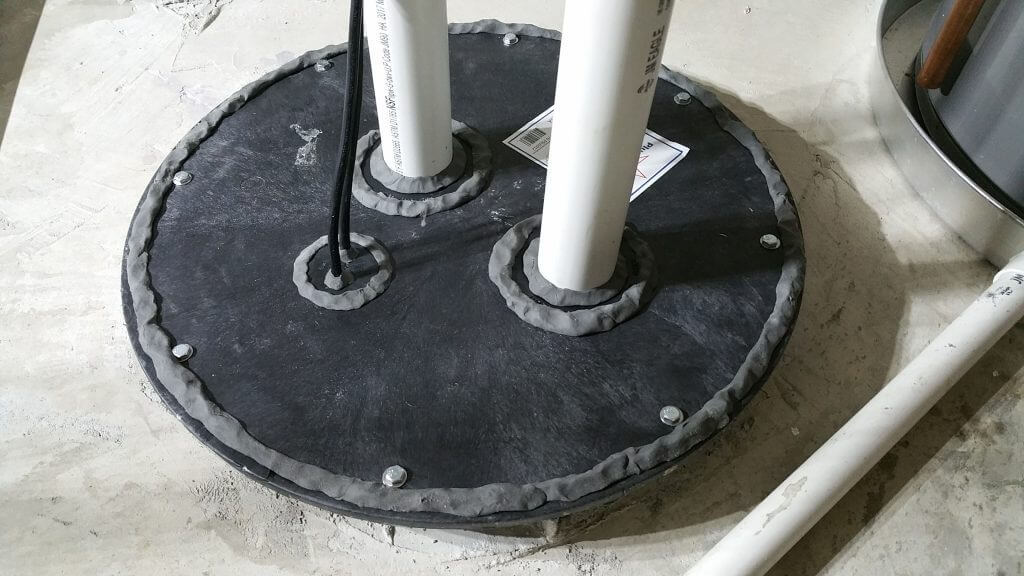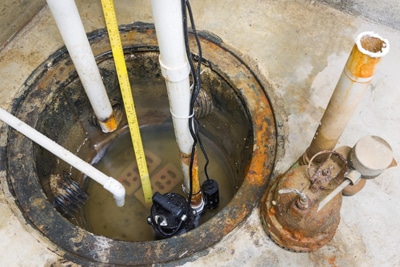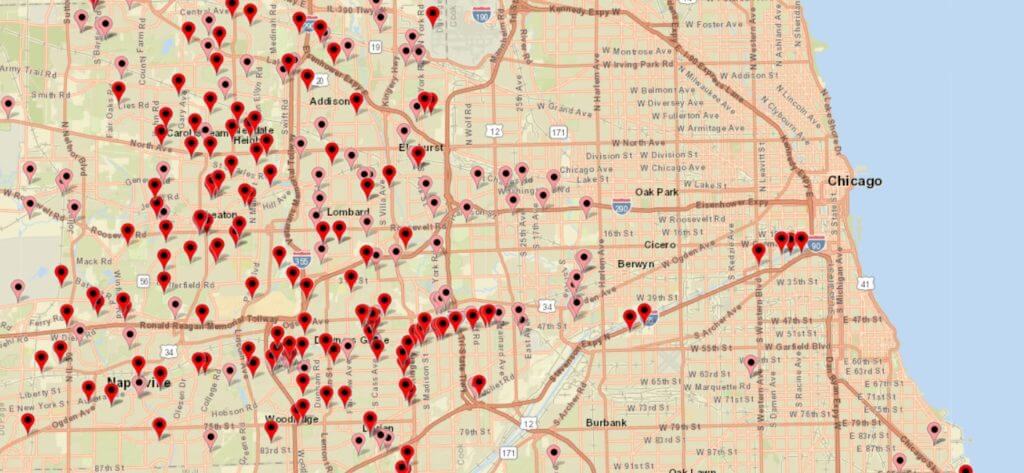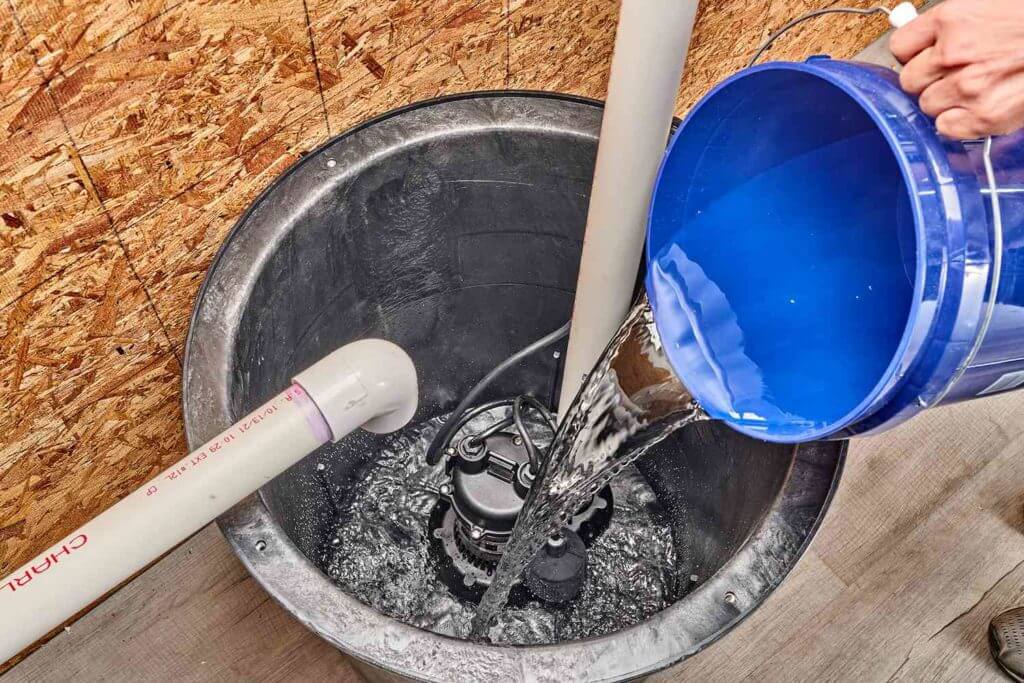Sump Pumps vs. Ejector Pumps

If your home has a basement, the best way to protect your home from flooding, either due to heavy rains or from a sewer backup, is to install a sump pump or basement ejector pump. While many believe these pumps have the same function, they actually don’t.
These pumps are commonly found in basements and are designed to prevent water or sewer damage. At first glance, they may appear to be similar, and they do share some common features. However, there are meaningful differences between the two pumps that make them suitable for different purposes. We will explore the distinctions between sump pumps and ejector pumps and help you determine the best sewer ejector pump or sump pump for your home. In this blog, we’ll also explain the fundamentals behind these two pumps and help answer the frequently asked question, “How do ejector pumps work?”
Ejector vs. Sump Pump: What’s the Difference?
When it comes to keeping your basement safe from water and sewage damage, it’s important to know the difference between a sump pump and a basement ejector pump. While both pumps have a similar appearance and use similar technology, they serve very different functions.
Sump pumps, which are typically found in crawl spaces or basements, are designed to prevent water accumulation caused by heavy rains. Ejector pumps, on the other hand, are in charge of transporting wastewater from basement toilets and sinks uphill to the main sewer line.
Read our blog about cleaning your sump pump drain line and how to do it.

What Is a Sump Pump?
Sump pumps remove water from the lowest point of a home to avoid flooding. It’s useful for homes below the water table, where heavy rain or snow can flood basements or crawl areas. A sump pump removes water from the home, reducing water damage and mold.
How Does a Sump Pump Work?
Sump pump installations may be necessary for high flood-risk homes. When water enters the basement or crawl space through the foundation, it flows to the lowest point of the home, where the sump basin is situated and collects there. A float sensor, identical to the one found in toilet tanks, aids in the detection of standing water. When the water level hits a certain level, the float activates the sump pump’s pump mechanism, causing the water to be pumped out of the basin.
The water is pumped through a drain line that discharges it outside the house and away from the foundation, or it can be connected to a storm sewer.
Sump pumps are vital for flood-prone homes, preventing water damage and mold growth.
WARNING: If this pump fails or does not function properly, your house may be flooded. Sump pumps require electricity to work. Some sump pumps have a backup battery or generator in case of power outages, which can occur during severe storms. This ensures that the sump pump can continue to operate and remove excess water even if the power goes out.
What is an Ejector Pump?
An ejector pump, also known as a sewage ejector pump or basement ejector pump, is a type of pump that is designed to move wastewater and gray water uphill from a basement or lower level to the main sewer line. Unlike a sump pump, which is used to remove excess water from a space, an ejector pump is used to handle sewage and other types of wastewater.
Contact us today!
How Do Ejector Pumps Work?
If you’re wondering “how do ejector pumps work?” the answer is simple. It works by pumping the wastewater from a basin or pit up through a discharge line and into the main sewer line. The pump is housed in a pit, much like a sump pump, but with a sealed lid and a vent pipe connecting to the main sewage line. The float switch starts the pump when wastewater from toilets, sinks, and floor drains enters the pit. The pump grinds and macerates the solids before pumping the wastewater up to the main sewer system via the discharge conduit. Additionally, the ejector pump will have a vent pipe that expels sewer gasses to the outside.
Wastewater would not flow uphill without a basement ejector pump, resulting in backups and possible health hazards. They are critical for ensuring that waste is correctly disposed of and that plumbing systems function effectively.

Do I Need a Sump Pump or an Ejector Pump?
Now that you understand the key differences and answers to common questions like, “How do ejector pumps work?” it’s time to consider the best sewer ejector pump or sump pump for your home.
Determining whether you need a sump pump or an ejector pump depends on the purpose you require it to serve. Consider the following considerations when deciding between a sump pump and an ejector pump:
- Consider how you intend to use your basement. You’ll need an ejector pump to dispose of wastewater from a basement restroom or wash. A sump pump should serve if you only use the basement for storage or as a living space.
- Water vs. Sewage: A sump pump is intended for water, whereas an ejector pump is intended for waste. A sump pump is the best solution for water buildup problems. You’ll need an ejector pump if you have a sewage-producing basement toilet or kitchen.
- Plumbing: The sort of plumbing in your basement will also influence which pump you require. If your cellar has a floor drain or a sink, an ejector pump is almost certainly required. If all you have is a sump hole, a sump pump will suffice.
Finally, it is best to consult a professional plumber to determine which pump suits your particular requirements. At Rocket Plumbing, we can help you find the best sewer ejector pump or sump pump for your basement.
Tips For Proper Maintenance And Troubleshooting
Sump pumps require regular maintenance, which includes cleaning the pump and sump basin to avoid malfunction. Ejector pumps, on the other hand, do not require routine repair. However, to avoid pump failure, it is best to examine and clear any toilet paper or debris collected on the float regularly. Another critical element is to replace any cracked lid as soon as possible to avoid health risks from sewer gas. Debris caught in the float, and cracked lids are two of the most common causes of ejector pump failure.
A quick way to test a Sump Pump in your basement – Do a pour test…
Over the last few months, your sump pump or basement ejector pump may have been sitting idle in your sump pit. Fall and winter seasons can bring heavy rain and melting snow. While your sump pump may have been working fine last season, there is NO guarantee that it will work when you most need it.
When a sump pump sits idle, it is like a car battery sitting for months without being started. Any home with a sump basin is vulnerable to water damage, especially basement flooding in our area, and if you lose power or there is a pump failure.

Fill a five-gallon bucket with water and pour it slowly around the sump pump basin. The pump should turn on once the water level reaches a predetermined level. If the pump doesn’t turn on, it may be either clogged or a faulty connection.
This could mean it’s time to call a pro for a second opinion.
Sump Pump vs. Ejector Pump: Final Thoughts
Although both have basins and share the basement, a sump pump funnels unwanted outside water back out, whereas a basement ejector pump deals exclusively with sewage wastewater. While not the most glamorous items of one’s home, understanding their functions and differences can save you some significant homeowner head-scratching.
These pumps are both crucial to the proper functioning of your house. Both pumps are highly technical, and any work done on them, such as sump pump or ejector pump replacement, should be handled by an expert. All the same, it is a good idea for the homeowner to know what the difference between the pumps is in case an issue develops. Don’t worry about solving the problem. That’s why you should get a licensed plumber to install, repair, and replace these pumps.
Call your local Rocket Plumber now! (773) 299-1600. Our licensed, experienced plumbers can help with your sump and ejector pump needs.





